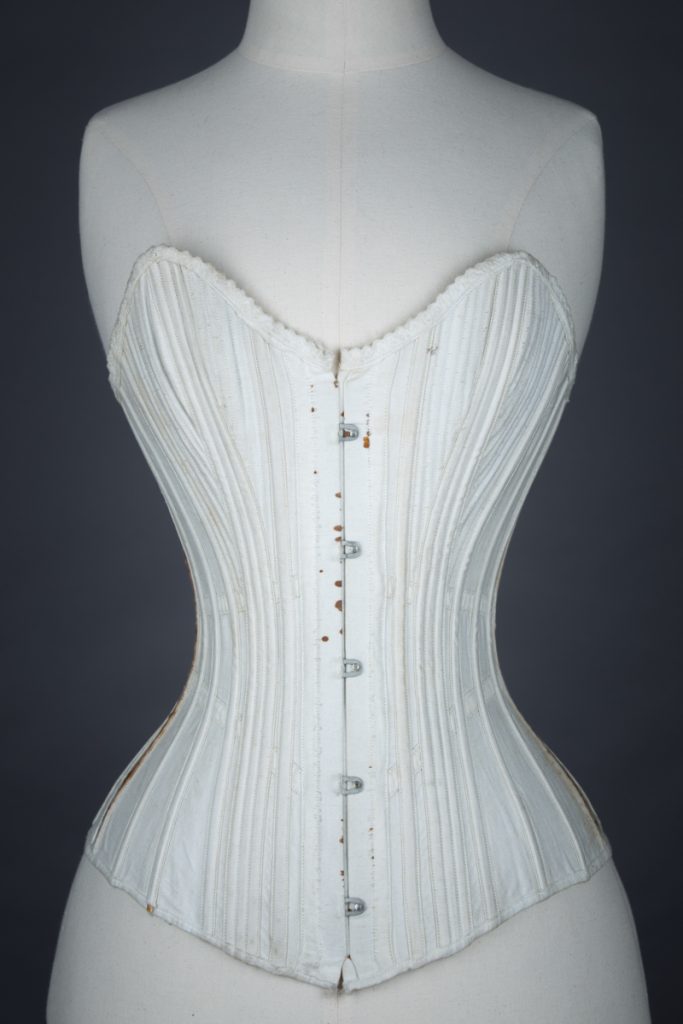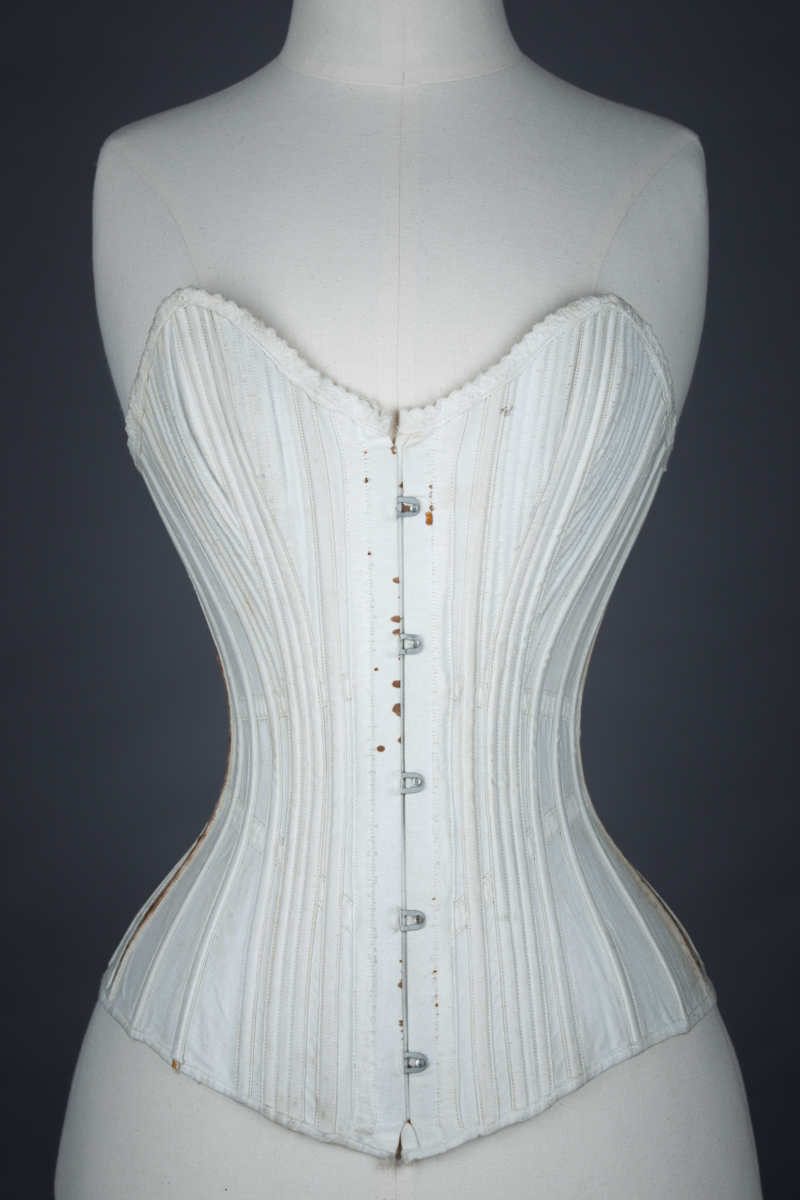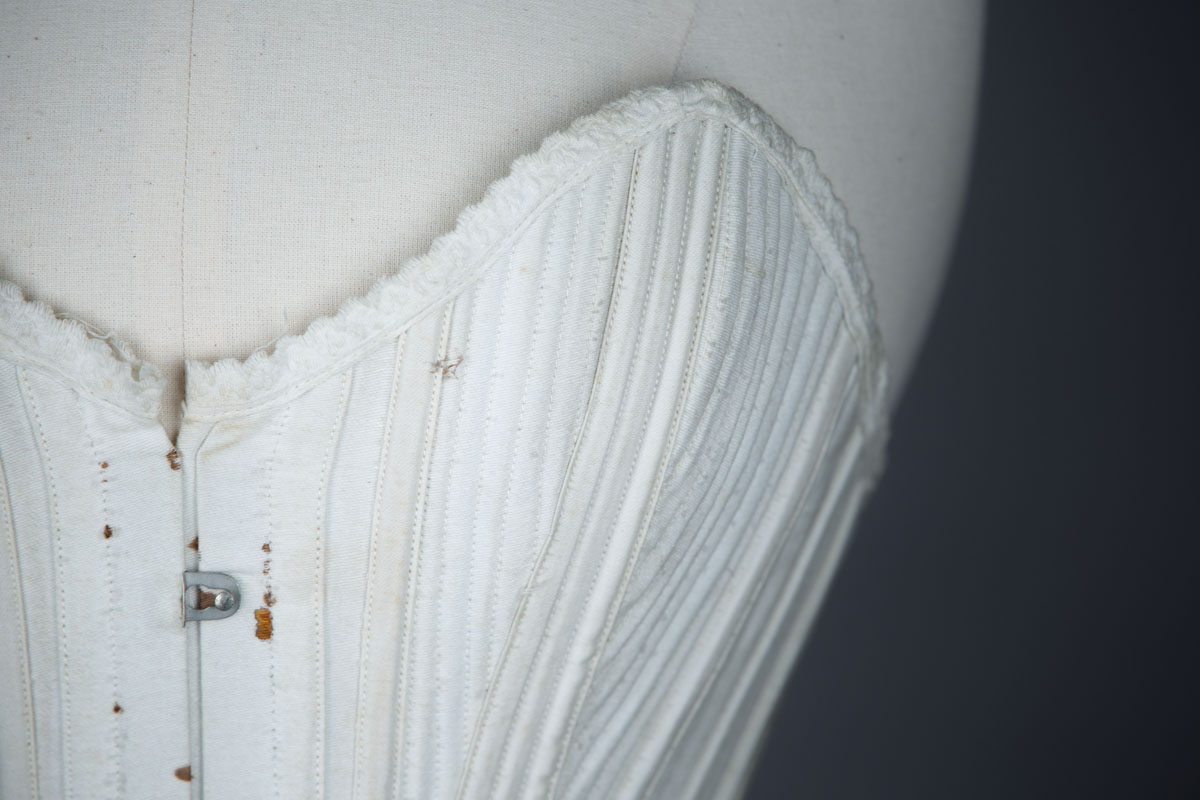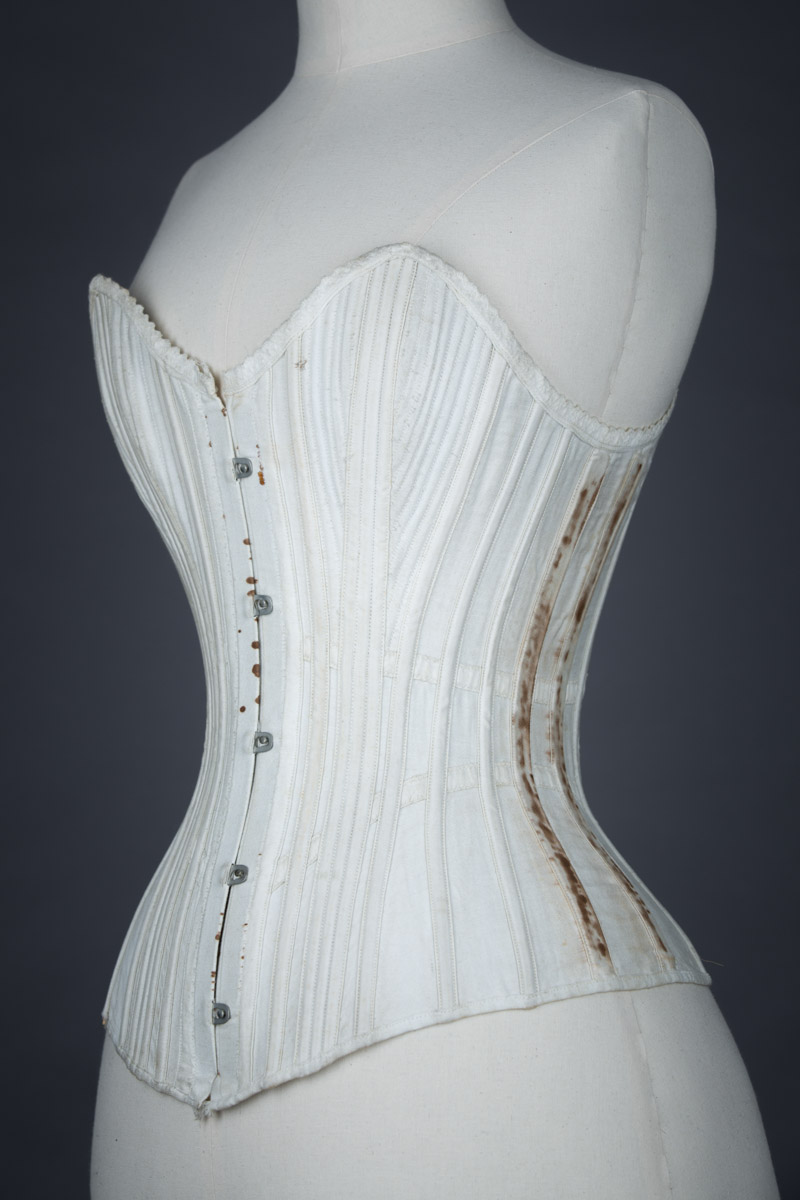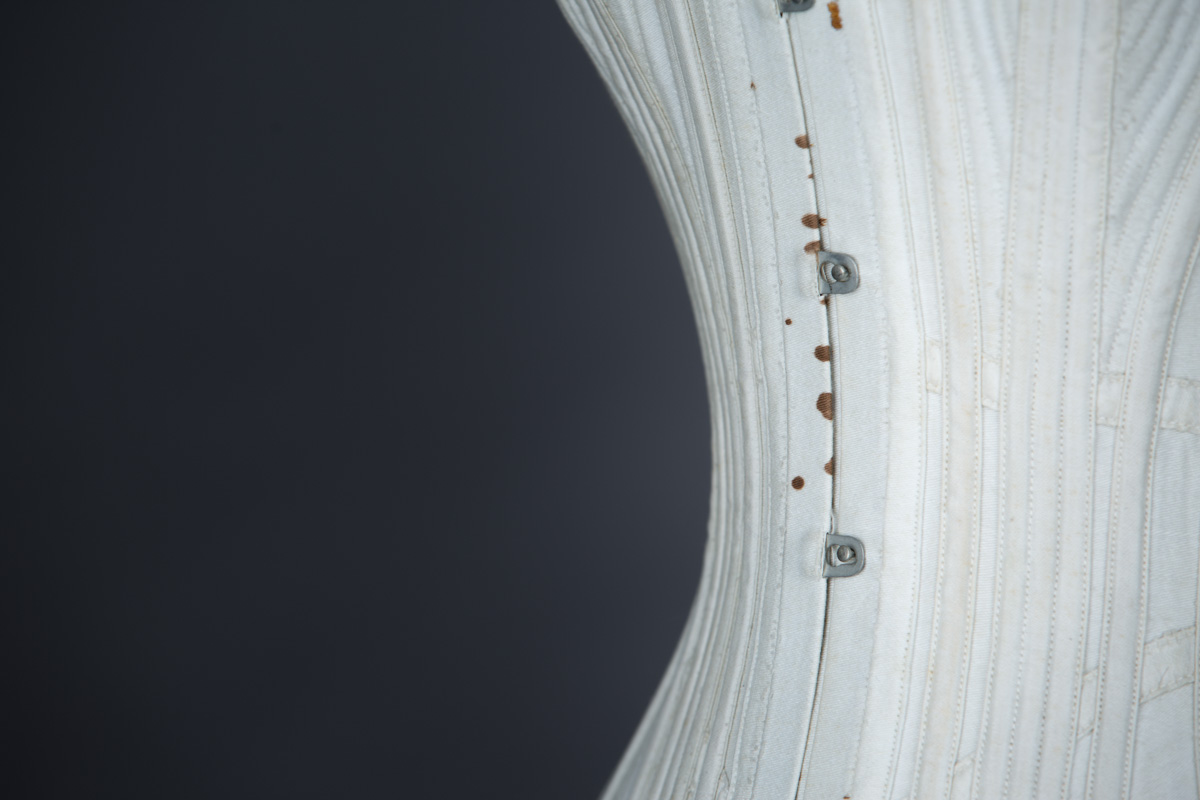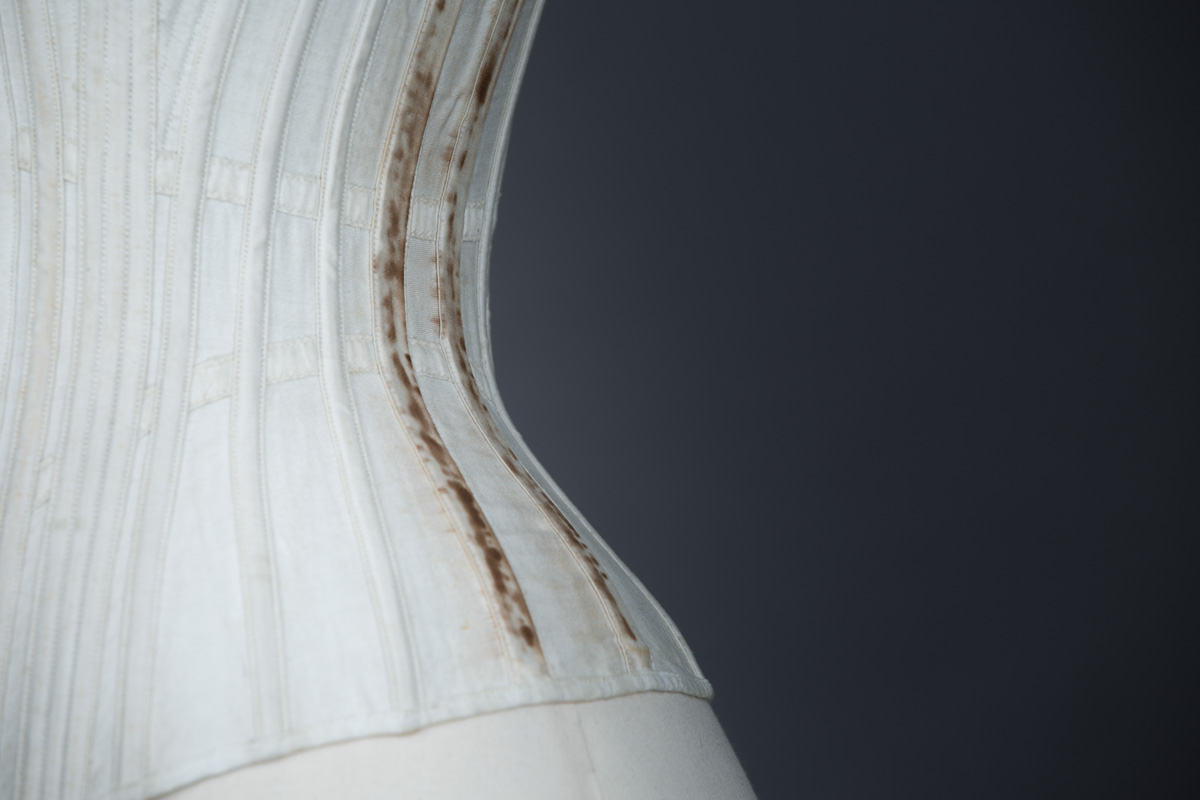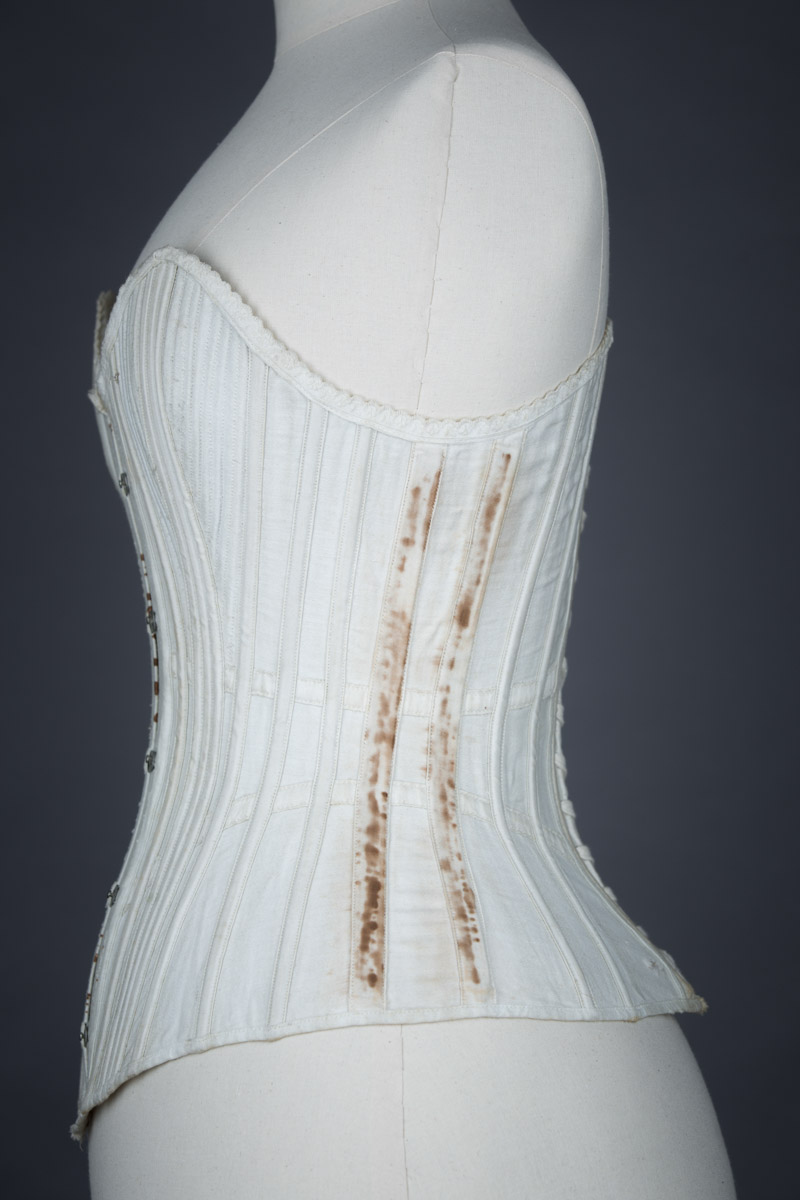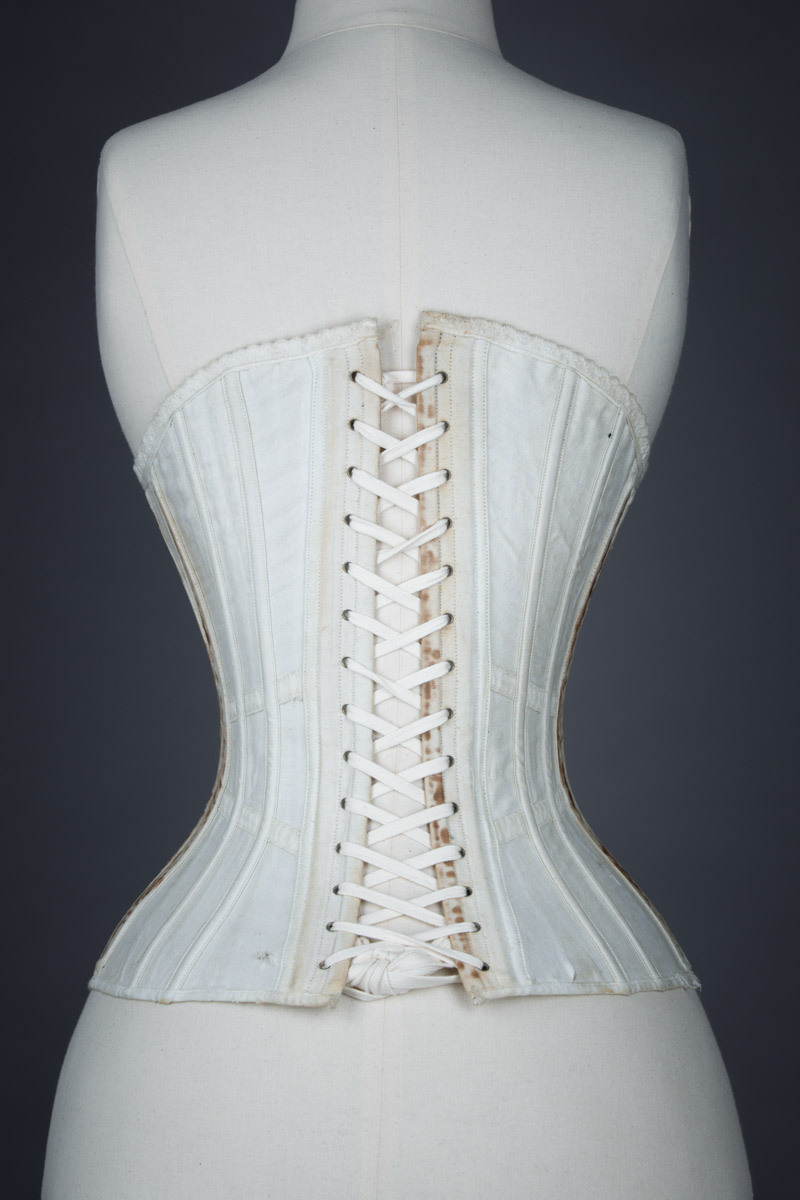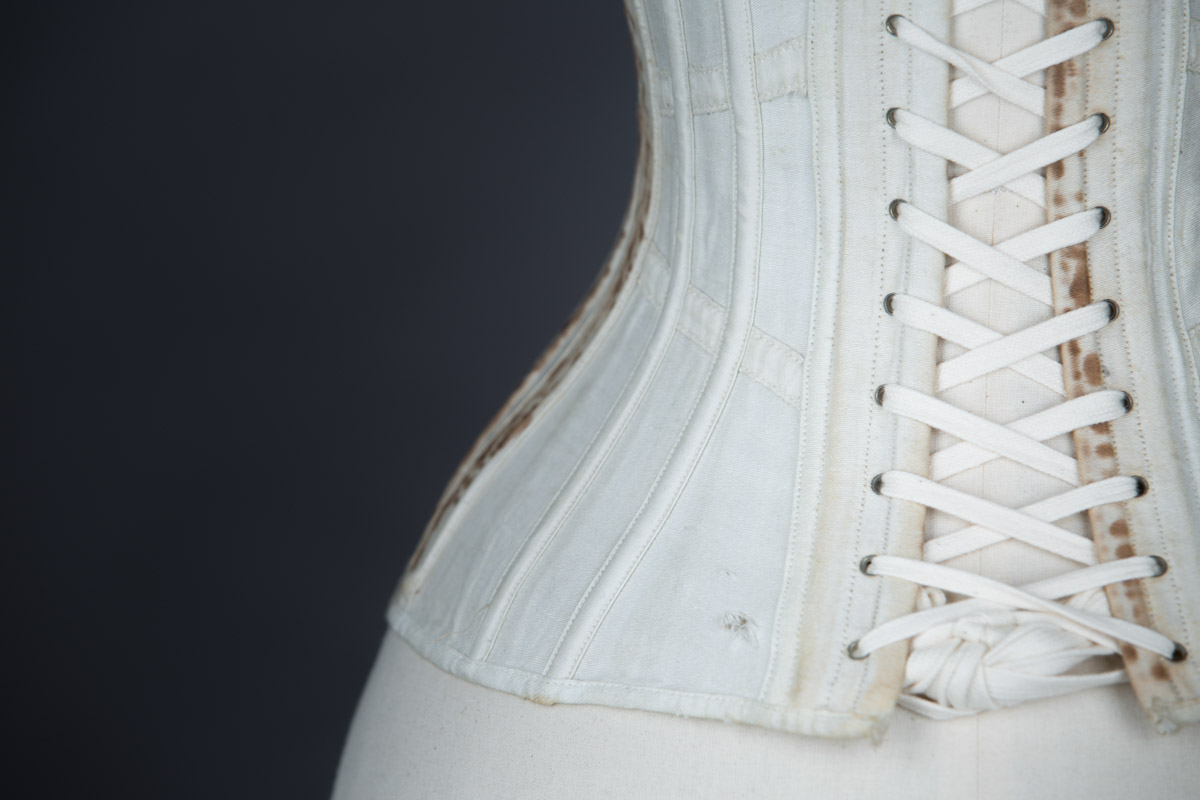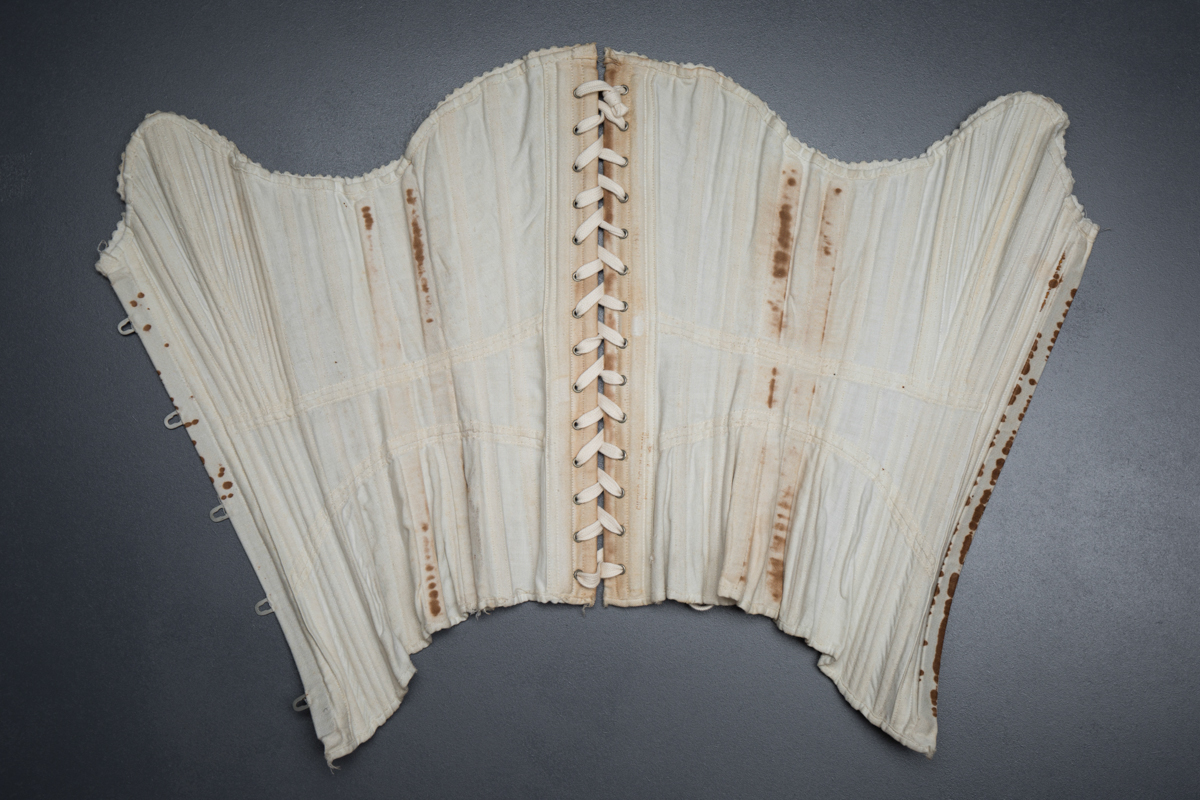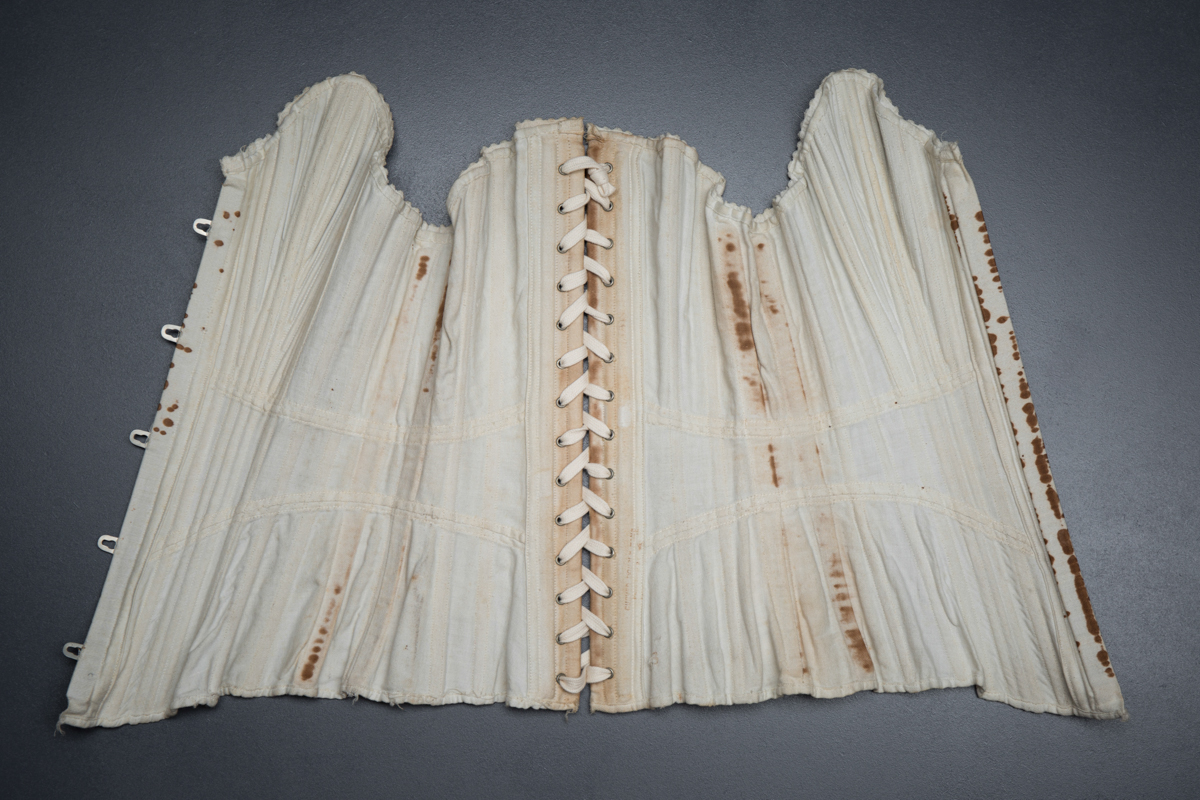Date: c. 1890s
Origin: Unknown
Fabric: Cotton coutil
Brand: Unknown
This corset boasts a relatively unusual cut, with an uncommon sweetheart cut bustline and a pattern based around a horizontal waistband, not disimilar to this garment. The top half of the corset is split into three vertical panels and the bottom into two panels, with additional plackets for the busk and lacing panels.
This corset is also boned almost entirely with cane, and was created at a time when baleen was starting to become short in supply, with many corsetmakers seeking cheaper alternatives. Cane had the benefit of being much cheaper and easily accessible than baleen, as well as being very lightweight and flexible. Unfortunately cane also had the tendency to become brittle and snap, particularly in dramatically shaped corsetry. This corset uses a combination of cane boning throughout the garment vertically, with two 13mm wide steel bones on each corset side, and a single narrower 8mm flat steel bone at the centre back by the eyelets. Each bone is encased in a sateen coutil channel, placed vertically throughout the body of the corset, including covering vertical seams. The horizontal seams are taped over with the same fabric on the exterior of the garment.
The top and bottom edges of the corset are bound in a narrow cotton tape, with a decorative woven cotton trim embellishing the top line of the garment. The corset fastenes with a gently curved busk with 5 loops and pins at the centre front. The centre back of the garment has a row of single part eyelets. Unfortunately the original laces for this garment are missing, and were replaced with contemporary cotton laces for these photos.
From the collection of The Underpinnings Museum
